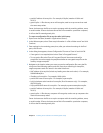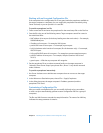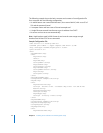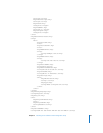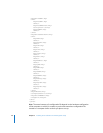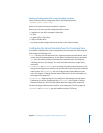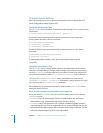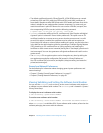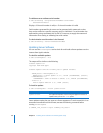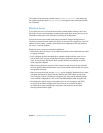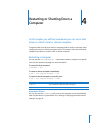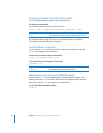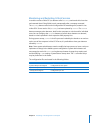
Chapter 3 Installing Server Software and Finishing Basic Setup 49
 The default certificate format for SSLeay/OpenSSL is PEM. PEM format can contain
private keys (RSA and DSA), public keys (RSA and DSA), and (x509) certificates. It
stores data in Base64-encoded DER format with ASCII header and footer lines which
makes it suitable for text-made transfers between computers. For some tools, you
need the certificate in plain DER format. You can convert a PEM file (cert.pem) into
the corresponding DER file (cert.der) with the following command:
$ openssl x509 -in cert.pem -out cert.der -outform DER
 servermgrd checks the validity of the SSL certificate only if the “Require valid digital
signature” option is selected in Server Admin preferences. This option uses an SSL
certificate installed on a remote server to ensure that the remote server is a valid
server. If this option is enabled, the certificate must be valid and not expired, or
Server Admin will refuse to connect. Before enabling this option, use the instructions
in the Mail Service administration guide for generating a Certificate Signing Request
(CSR), obtaining an SSL certificate from an issuing authority, and installing the
certificate on each remote server. Instead of placing files in /etc/httpd/, place them in
/etc/servermgrd/. You can also generate a self-signed certificate and install it on the
remote server.
 The
servermgrd SSL encryption options can be changed at any time by editing the
com.apple.servermgrd.plist configuration file located in /Library/Preferences/.
Your SSL certificate (ssl.crt/server.crt) and keyfile (ssl.key/server.key) are located in /
private/etc/servermgrd/.
General and Network Preferences
See the following for information about changing general system preferences and
network settings:
 Chapter 5, “Setting General System Preferences,” on page 57
 Chapter 6, “Setting Network Preferences,” on page 63
Viewing, Validating, and Setting the Software Serial Number
You can use the serversetup tool to view or set the server’s software serial number or
to validate a server software serial number. The serversetup tool is located in /System/
Library/ServerSetup.
To display the server’s software serial number:
$ sudo serversetup -getServerSerialNumber
To set the server software serial number:
$ sudo serversetup -setserverSerialNumber
serialnumber
watermarkinformation
where
serialnumber
is a valid Mac OS X Server software serial number, as found on the
software packaging that comes with the software.




